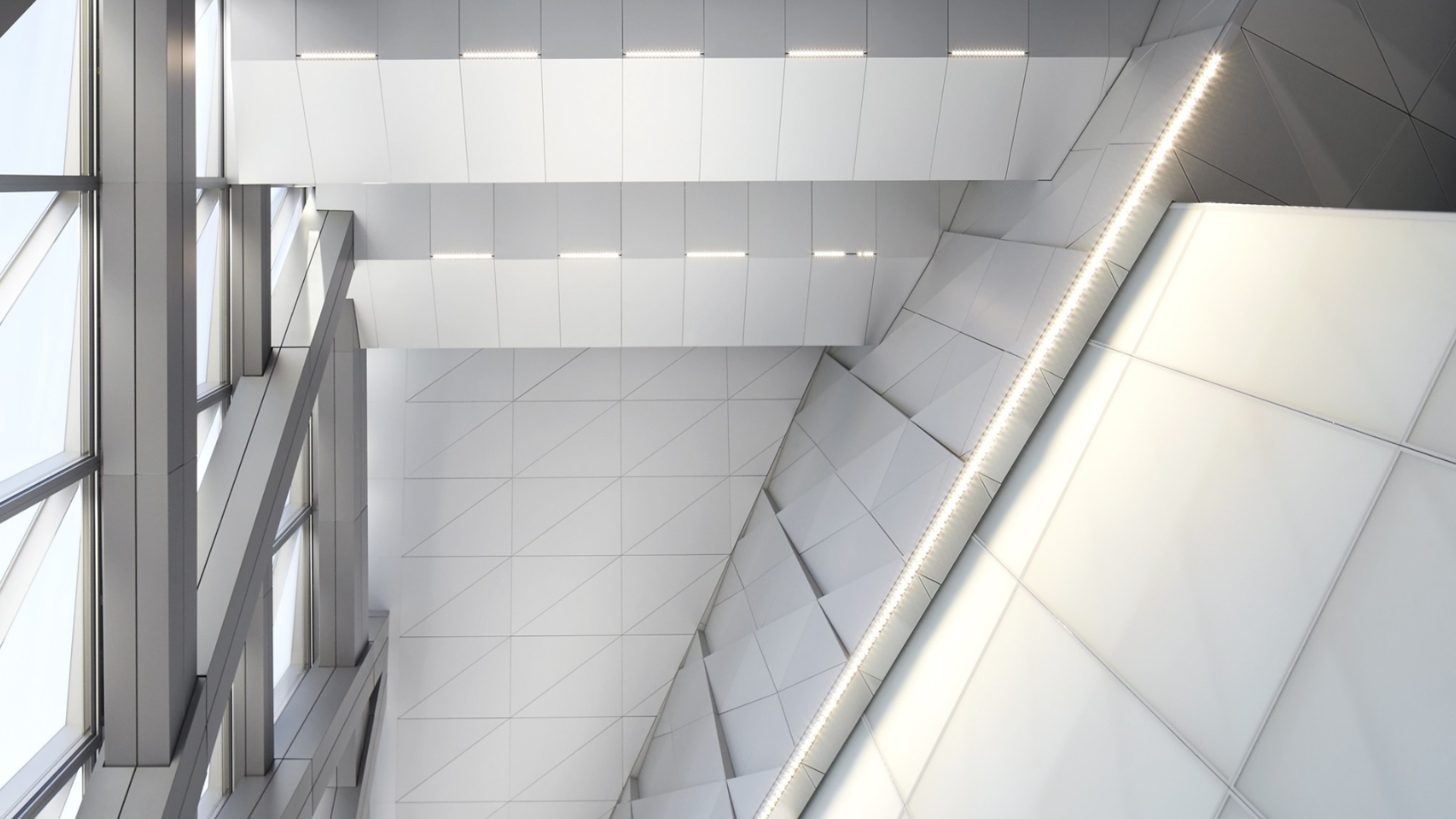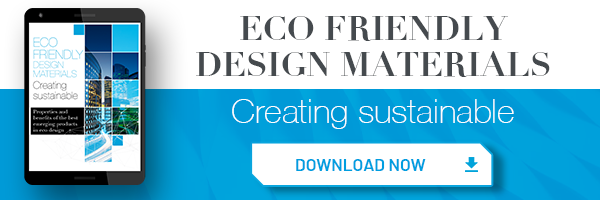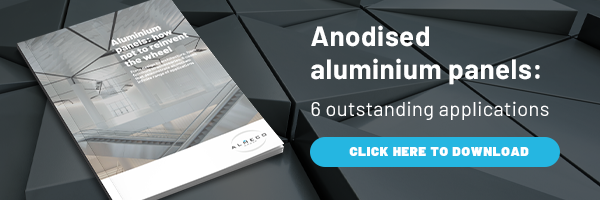Lightweight, flexible, resistant, environmentally friendly, and completely recyclable: thanks to its unique features, Aluminium is today used in numerous applications, including those in residential/commercial buildings.
Here, aluminium is used for reflective surfaces in lighting applications, ceilings, roofing, switch plate covers and interior design elements. When thinking of aluminium, we should not think of a “static” metal, but a material which can be “crafted” using different techniques to obtain surfaces with different effects and colours.
One of these techniques is the anodising process, which increases the metal surface strength and durability by protecting the surface with a tough oxide layer and improves its appearance by giving high homogeneity and reflectivity. The electro-brightening makes the metal even brighter especially for lighting and decorative applications.
The surface can be coloured by filling the pores of the oxide layer with special pigments to obtain either an extraordinarily wide portfolio of nuance.
A three-dimensional aspect of the aluminum plate can be obtained by means of the embossing process, which can generate diamond shapes, waves, stripes and many other amazing patterns.
1. Inside buildings: elegance and strength thanks to aluminium building products
These numerous possibilities, in terms of effects and colouring, make aluminium a metal that is very suitable for decorative applications, precisely because it can be used to create “unique” surfaces and objects.
In residential environments, for example, anodised aluminium can be used to create objects and decorative elements of different sizes: from switch plate covers to furniture, to home appliances such as fridges and kitchen hoods.
In interior design, aluminium can therefore be used in various applications that combine the durability and elegance of this metal.
At airports, for example, the focus on decorative elements is combined with the need for fire-resistant ceilings. Here, aluminium may be preferred to other less expensive metals, such as steel, precisely because of its unparalleled decorative value and lightness.
2. Not just aluminium building products: applications to boost brand identity
In increasingly competitive markets, companies must also be able to attract customers’ attention through unique designs, which can relate to both packaging and points of sale.
The possibility of creating unique designs also makes aluminium particularly interesting for applications in the cosmetics and fashion industry.
The packaging of a product, as well as its display, are in fact important marketing tools: decorative elements become opportunities to communicate important brand values to customers, even without words. Additionally, decorative elements, both in packaging and points of sale, can strike the consumer so much that they are associated with brand identity at a glance.
3. Lightness, sustainability, and elegance: aluminium in the automotive industry
This high decorative value, combined with the excellent strength-to-weight ratio, make aluminium a material that is also highly relevant for the automotive industry. In this field, aluminium finds application in certain elements that, although they may not appear very relevant, are indispensable to the aesthetic value of the vehicle, such as:
- dashboards and interior trim;
- door knockers;
- exterior trim;
- emblems;
- anodised technical components.
The contribution that this extraordinary metal can make to the automotive industry is not limited to aesthetics. Automotive is one of the industries for which the ecological transition will be most relevant, but also most challenging. With the stop of the sale of internal combustion vehicles from 2035, as decided by the EU, redesigning the entire industry with a view to greater efficiency and sustainability is imperative for companies that do not want to be excluded from the market.
4. Sustainability drive applications in the transport industry
It goes without saying, therefore, that all vehicle components must be optimised according to these paradigms. The lightness of aluminium, which is directly related to fuel consumption and CO2 emissions, guarantees a more sustainable future.
These advantages, combined with the elegance that aluminium, like few other materials, can give, have made this metal an essential component for other transport industries, such as aviation.
In modern aircraft manufacture, aluminium is used everywhere. The Boeing 737, the best-selling jet commercial airliner which has made air travel for the masses a reality, is 80% aluminium.
Today’s planes use aluminium in the fuselage, the wing panes, the rudder, the exhaust pipes, the door and floors, the seats, the engine turbines, and the cockpit instrumentation. But aluminium is also used in other transport-related applications, such as surfaces and decorative elements in yachts and railways.
A material for the industry of the future
In the coming years, more and more companies will face the challenge of a sustainable transition. At the same time, the customisation of products (increasingly important to consumers) is driving companies to look for more distinctive elements to separate themselves from the competition.
The advantage of anodised aluminium, as we have seen, is precisely that it can be easily adapted to so many applications in different industries. While some of these applications are already widespread, many others have yet to catch on or even be discovered.
That is why it is important to rely on the right partner who can combine an innovative vision and approach with the extensive expertise in processing this metal. With this recipe, there are a few limits left to the fields of application of this material, which will become increasingly important for the future of industry.


